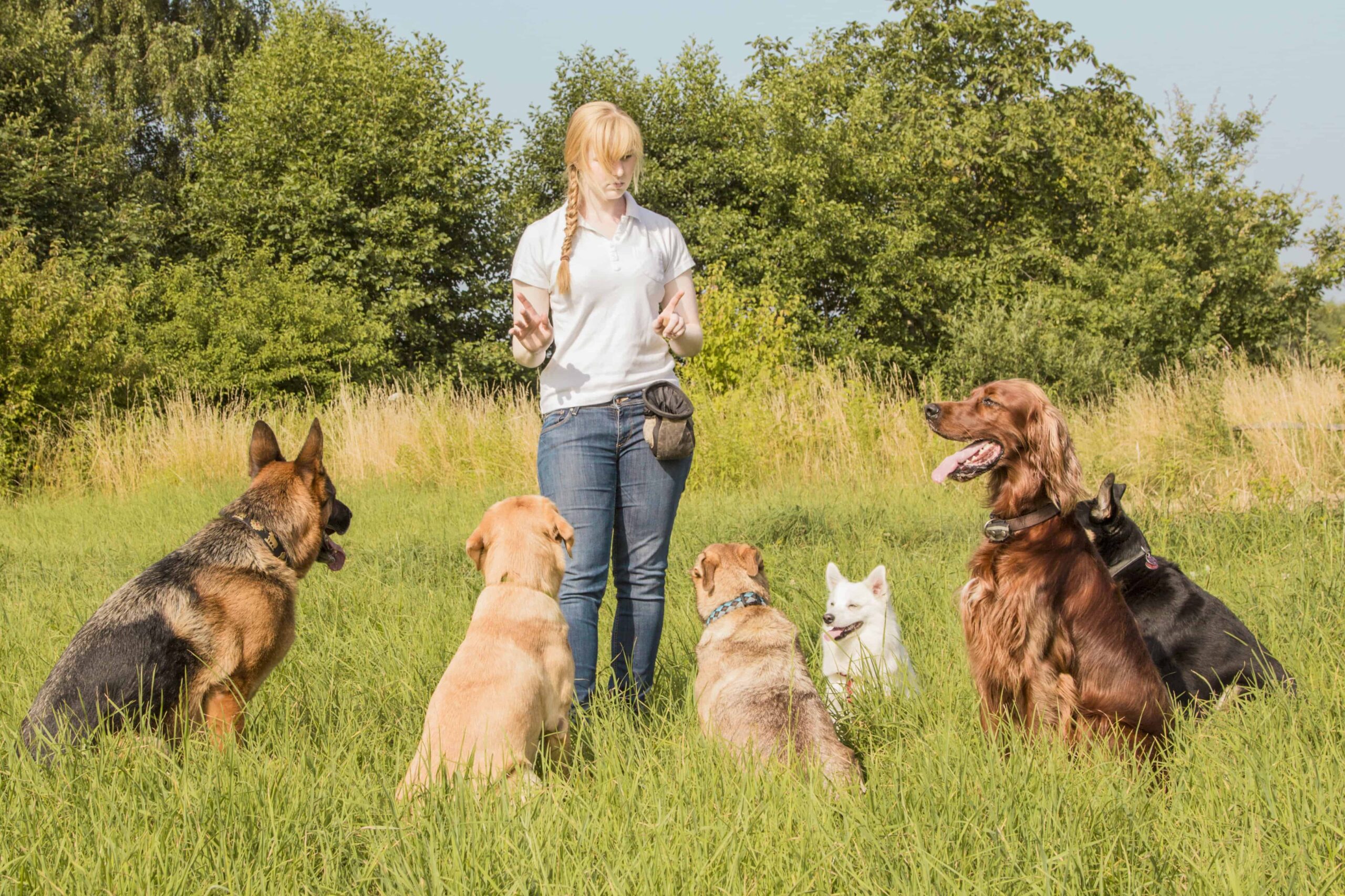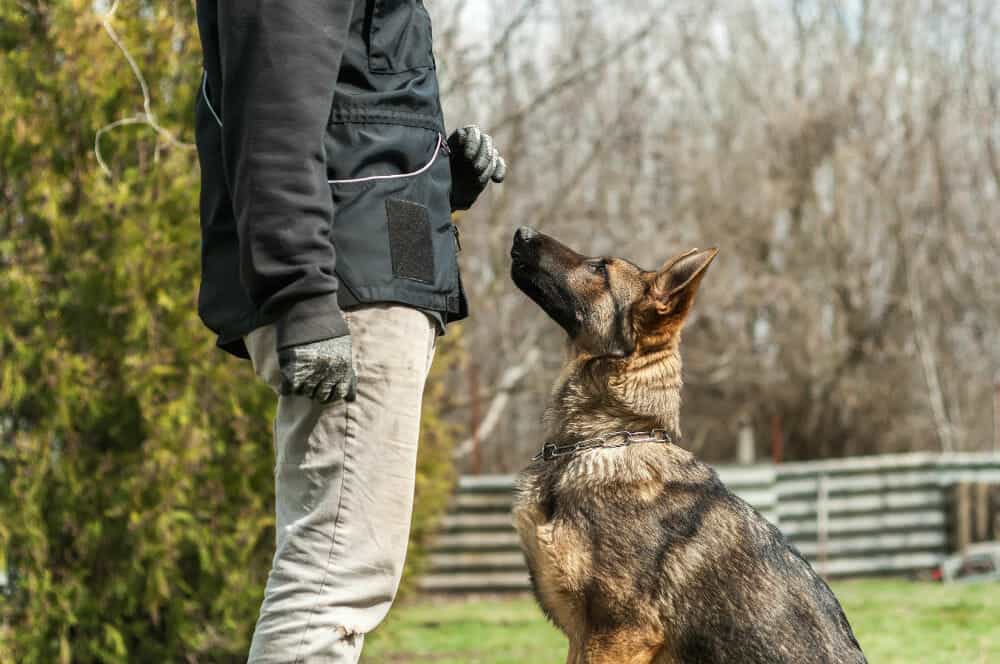Essential Tips for Successful Dog Training: A Guide for Pet Owners
Effective dog training is a diverse procedure that requires a tactical method customized to both the pet dog's temperament and the owner's purposes. Secret parts such as establishing constant commands, using positive reinforcement, and helping with very early socializing play crucial roles in cultivating a well-adjusted canine friend. Numerous pet owners encounter obstacles that can prevent development, leading to stress and uncertainty. Recognizing just how to navigate these obstacles can substantially improve the training experience, inevitably changing the relationship in between proprietor and pet. What are the vital strategies that can be used to guarantee success in this endeavor?
Recognizing Dog Habits
Understanding dog behavior is essential for efficient training and fostering an unified partnership between dogs and their owners. dog training. Dogs connect primarily through body language, articulations, and actions, making it important for owners to translate these signals precisely.
:strip_icc()/young-woman-training-her-dog-686725227-588bab6d5f9b5874ee8bcef5.jpg)
Socialization plays a considerable function in pet dog behavior; direct exposure to different environments, individuals, and various other pets can substantially affect a canine's character. Variables such as breed characteristics and specific character ought to assist training techniques, as some types may have details behavioral attributes that demand customized methods. By understanding these elements, owners can create a supportive setting that motivates positive behavior, resulting in successful training results and a much deeper bond with their pets.
Developing Constant Commands
Effective communication with your pet dog starts with establishing constant commands. This fundamental element of training is essential for cultivating understanding between you and your pet. Uniformity in the commands you make use of makes sure that your dog can dependably associate details words or expressions with the wanted behaviors.
When picking commands, pick clear, distinct words that are very easy to distinguish and say from each other. Prevent utilizing similar-sounding commands that might confuse your pet dog. Using "sit" and "stay" is proper, however "sit" and "struck" might lead to misunderstandings.
Additionally, keep the same tone and quantity for each command. Dogs are sensitive to vocal signs, so differing your tone can develop complication.
It is just as crucial to guarantee that all relative are on the same web page regarding the commands used. A united front in command use will certainly stop combined signals and enhance the understanding procedure.
Positive Support Techniques
The power of favorable reinforcement in canine training exists in its capacity to urge desired habits with incentives and appreciation. This strategy is grounded in the principle that habits followed by positive end results are more probable to be duplicated. By incorporating favorable reinforcement right into your training routine, you can properly form your dog's behavior in a positive manner.
To execute positive support, it's necessary to identify what motivates your pet dog, whether it be deals with, playthings, or spoken praise. When your pet dog carries out a preferred action, such as sitting on command, right away reward them with a reward or affection. This organization in between the command and the positive result enhances their understanding.
It's crucial to timing the incentives properly; supplying the support within seconds of the desired behavior assists your pet dog make the connection (dog training). Additionally, consistency is key-- guarantee that all household members use the exact same commands and reward systems to avoid complication

Gradually, you can decrease the regularity of treats as your pet finds out the actions, transitioning to applaud or Recommended Reading intermittent benefits. This technique not only promotes a solid bond in between you and your pet yet also promotes a favorable understanding atmosphere, making educating an enjoyable experience for both.
Socialization and Interaction
Constantly subjecting your pet to a variety of environments, people, and other animals is vital for their social advancement. Socializing should start early, ideally throughout the critical home window of 3 to 14 weeks, when puppies are most responsive to new experiences. However, older pet dogs can also profit from ongoing socializing efforts.
Introduce your canine to various setups, such as parks, pet-friendly stores, and urban areas. This direct exposure aids them adjust to various stimuli, decreasing anxiety and anxiety responses. Encourage favorable communications with other find out here dogs and people, ensuring that these encounters are risk-free and regulated to cultivate confidence.
Make use of organized playdates with well-mannered pet dogs, as this can boost your dog's social skills and instruct them ideal actions. Obedience courses and training sessions additionally supply excellent chances for socializing, allowing your dog to connect with others in a monitored atmosphere.
Screen your canine's body movement during communications, as this will certainly assist you assess their convenience degree. Gradually increase direct exposure to more tough scenarios while ensuring that each experience declares. A well-socialized canine is more probable to show balanced actions, making them a happiness to have in any type of setting.
Resolving Typical Training Obstacles
Every dog owner will encounter training difficulties eventually, no matter their pet dog's age or socialization level. Determining usual concerns such as stubbornness, diversions, and terror can assist in creating effective strategies for enhancement.

Slowly present distractions as the pet dog becomes much more efficient in commands. Short, frequent training sessions are likewise effective in keeping attention.
Terror can impede a canine's knowing process. Gradual desensitization to the source of concern, combined with favorable reinforcement, can help alleviate anxiousness. Perseverance is essential; never ever compel a canine into a scenario that triggers distress, as this may intensify the problem.
Ultimately, understanding and addressing these usual obstacles with a structured approach will foster a more navigate to this website efficient training experience, strengthening the bond in between pet and proprietor while advertising efficient discovering.
Verdict
In summary, successful dog training depends on a detailed understanding of canine actions, the facility of regular commands, and the application of favorable support techniques. Socializing plays a crucial duty in creating well-adjusted family pets, while resolving typical training difficulties needs patience and flexibility. By carrying out these important strategies, family pet proprietors can cultivate a strong bond with their pet dogs and promote preferable behaviors, eventually bring about an unified connection between humans and their canine friends.
Understanding pet dog habits is important for reliable training and cultivating an unified relationship between pooches and their proprietors.Socialization plays a significant role in dog habits; direct exposure to numerous environments, individuals, and other animals can substantially affect a pet dog's temperament.The power of favorable reinforcement in pet training exists in its capability to encourage wanted behaviors via incentives and praise. By including favorable reinforcement into your training routine, you can efficiently form your canine's actions in a positive fashion.
In summary, effective dog training counts on a detailed understanding of canine actions, the facility of constant commands, and the application of positive reinforcement strategies.